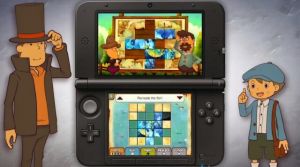Five Ways That Games Make You Think

Titles like the recent Ryse: Son of Rome or Titanfall usually spark the ire of the gaming elite; those in fear that their flagship is 'dumbing down' in some way with the new generation. That, in itself, is just empty gall spewing at spectacle features already. There is more to unlocking one's potential than sticking to those mind-bending genres filled with text and esoteric challenges of yore. Not everyone grew up trying to solve one Myst panel for five days straight and not all gamers are attracted by the spreadsheet management glory of pushing sliders in Europa Universalis. Games are more than their carbon molds.
Whatever their make is, a game with good design allows their user to explore their minds and make connections to become better, smarter and more proficient. That logic not only applies to games, but can further help to link patterns in the real world as well. Games can advance people, even those titles we think aren't actively stimulating. That's the beauty of a formative experience. Without the consciousness of learning something, it's still possible to reach self-fulfillment.
Here are some of the ways games can make you think, listed with an exemplary title for illustration.
Method 1: Straightforward
While there aren't just puzzle games that activate the brain, it's important to keep in mind that there are genres specifically created for that design. These 'brain teasers' are the most recognizable when it comes to recommending 'smart' games. Yet, there are gradations here as well. A challenge too rigid and the feature is only accessible to the already initiated. When a project is too lenient, frameworks don't need to be tapped enough to snap to that quick-fire thinking that lasts beyond a playing session. That's why the best format is buried within an overarching concept; something to hide the boring learning, like vitamins in a piece of meat.
Professor Layton
One of the more lucrative franchises on handhelds, fitted for this genre, is the Professor Layton series and that for good cause. A nicely woven story within a troubled world represents these conceptual frameworks that can be accessed, solved and then open up a more complex design as a result. While puzzles are the core mechanism, they're used as a tool that puts players in the central position of the story. By reaching over just solving quandaries, opening one's mind becomes more engaging and fulfilling. Frameworks are used faster to facilitate these ulterior motives.

All games act the same... they give you a set of rules and have you decode some patterns and used it to beat the game...
the real factors of how the video games encourage mental exercise is the learning curve.
Study shows that video games only stimulate the brain during the learning curve phase and eventually the stimulation dies down after the game pattern has been decoded then it becomes mechanical... "like riding a bike"
this translate to the idea that the more complex the game rule is the more it is stimulating to the brain.
FPS, in terms of gameplay mechanics, have a low learning curve same with movie games like Ryse.
However FPS in a multiplayer arena involves external factors like human psychology and often times real world battle tactics that also requires mastery separate from the game itself...
but since FPS game rules are easily learned and often rehashed of older titles, human behavior involves in FPS gameplay are very limited and often very predictable